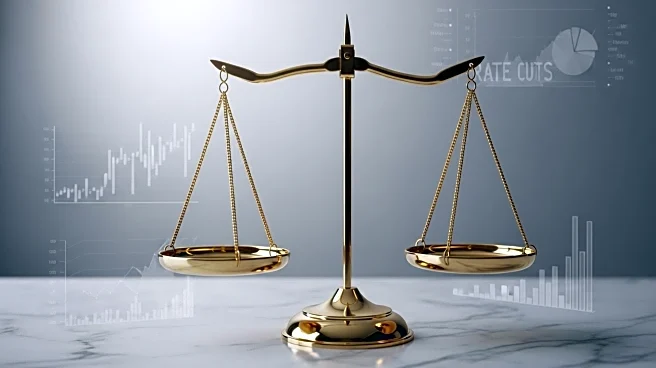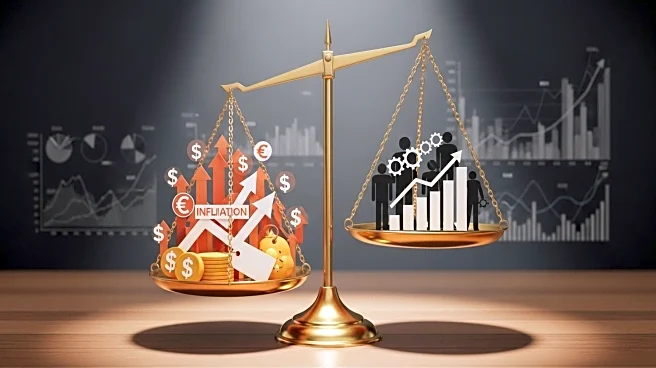What's Happening?
The U.S. Federal Reserve has reduced interest rates by 25 basis points, prompting market participants to anticipate further cuts later this year. The decision has led to a rise in gold prices, which are nearing record highs due to expectations of additional rate cuts and ongoing geopolitical uncertainties. Investors are closely monitoring the U.S. Personal Consumption Expenditures index, the Fed's preferred inflation gauge, for further indications of potential rate adjustments. The CME FedWatch tool indicates a high probability of two more 25-basis-point cuts in October and December. The current economic environment, characterized by low interest rates, is favorable for gold, a traditional safe-haven asset during times of uncertainty.
Why It's Important?
The Federal Reserve's decision to cut interest rates is significant as it impacts various sectors of the U.S. economy. Lower interest rates generally encourage borrowing and investment, potentially stimulating economic growth. However, they also reflect concerns about economic stability, including labor market weaknesses and inflationary pressures. The rise in gold prices highlights investor anxiety over geopolitical risks and economic uncertainties. This situation could affect financial markets, influencing stock prices and investment strategies. Stakeholders such as investors, businesses, and policymakers must navigate these dynamics, balancing growth opportunities with risk management.
What's Next?
Market participants are anticipating further rate cuts, with the next potential adjustments expected in October and December. Investors will be watching economic indicators closely, particularly the U.S. Personal Consumption Expenditures index, for signs of inflationary trends that could influence the Fed's decisions. The geopolitical landscape, including tensions involving NATO and Russia, will also play a role in shaping economic conditions and investor sentiment. As the Fed continues to balance economic growth with inflation control, stakeholders will need to adapt to evolving monetary policies and their implications for the economy.
Beyond the Headlines
The Federal Reserve's actions reflect broader economic challenges, including balancing inflation control with labor market support. The geopolitical tensions add complexity to the economic outlook, potentially affecting international relations and trade. The focus on gold as a safe-haven asset underscores the uncertainty facing investors, who must consider both domestic and global factors in their decision-making. The Fed's independence and its ability to navigate these challenges are crucial for maintaining economic stability and confidence.










